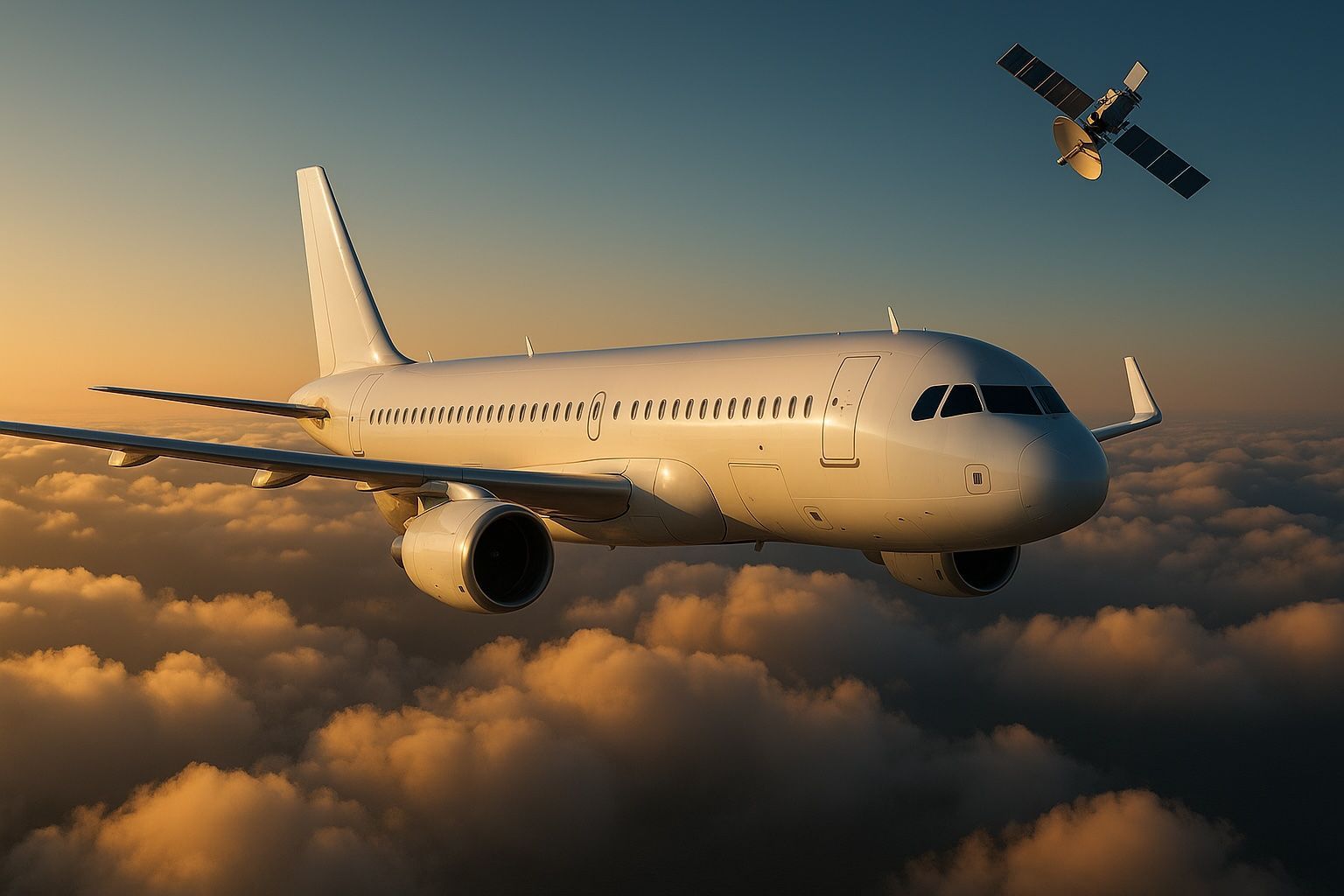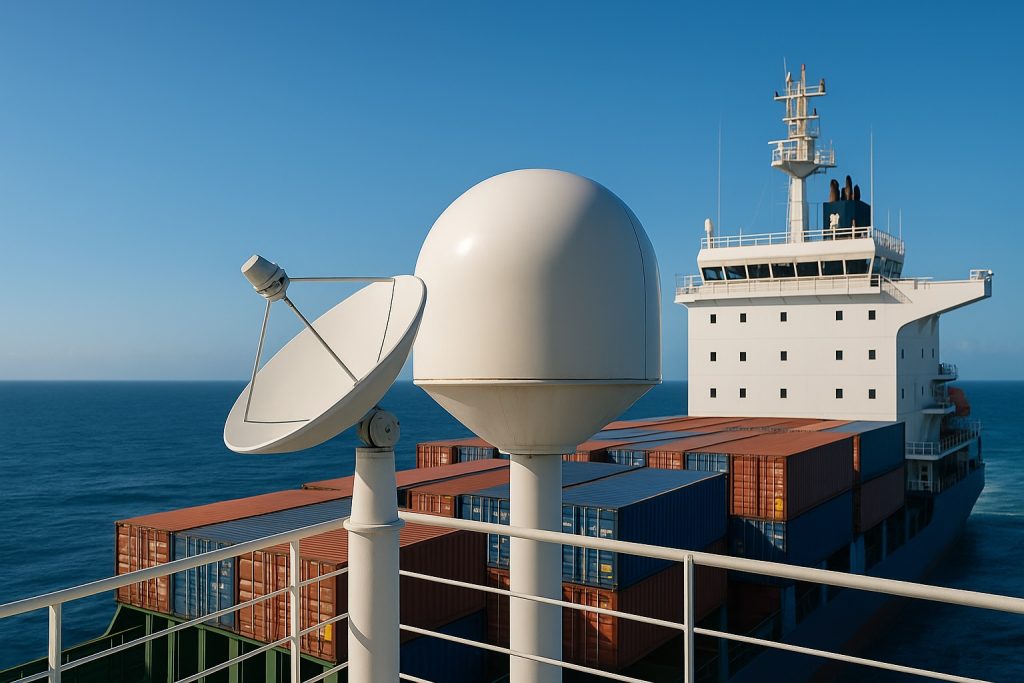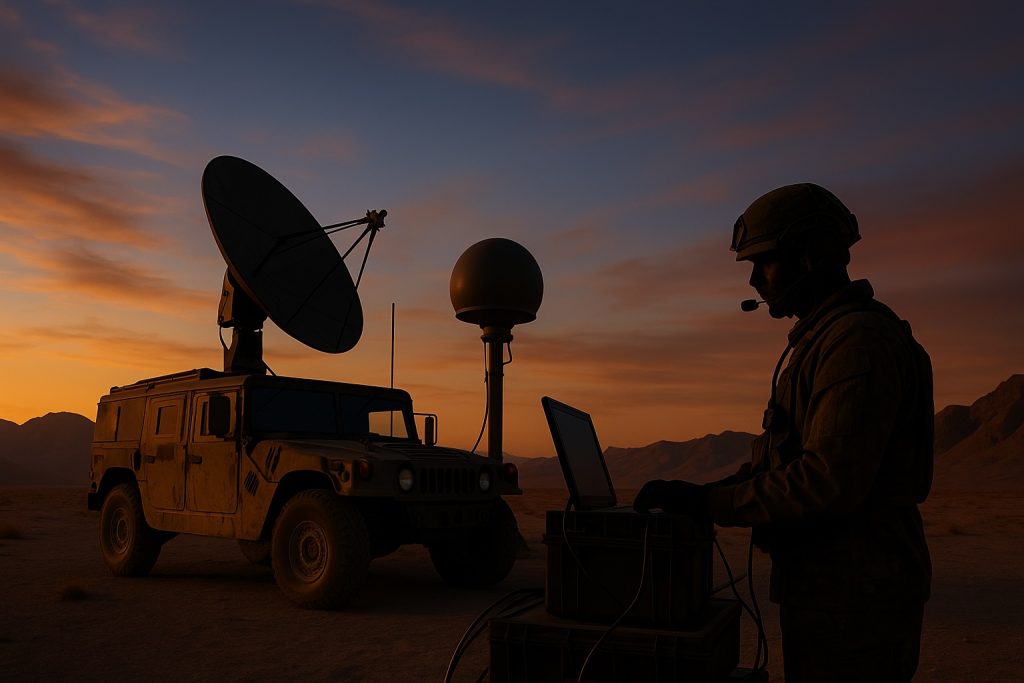- By late 2022, more than 10,000 aircraft worldwide were equipped with in-flight connectivity, and about 65% of airlines planned further IFC investments in the next few years.
- Aireon’s space-based ADS-B payloads on Iridium NEXT have been operational since 2019, enabling global real-time tracking and supporting ICAO’s 15-minute GADSS position reporting standard.
- COSPAS-SARSAT, a global satellite distress system, relays 406 MHz ELT signals from aircraft to ground stations to coordinate search and rescue and has saved thousands of lives.
- Global Navigation Satellite Systems—GPS (USA), GLONASS (Russia), Galileo (EU), BeiDou (China)—provide precise positioning, while SBAS like WAAS and EGNOS offer 1–2 meter precision approaches for navigation.
- Inmarsat operates a GEO constellation (14+ satellites) delivering L-band safety communications, SwiftBroadband cockpit data, and Ka-band GX Aviation with up to about 50 Mbps per aircraft.
- Iridium provides a truly global L-band network of 66 satellites, hosts the Aireon ADS-B payloads, and offers Certus broadband up to roughly 700 kbps for cockpit IP data and voice.
- SpaceX Starlink is a LEO constellation with over 4,000 satellites at about 550 km (growing to around 12,000), offering up to 350 Mbps per aircraft with latency under 50 ms, with carriers like JSX and Hawaiian Airlines pursuing use.
- OneWeb is a UK-led LEO constellation with 648 satellites at roughly 1,200 km, providing global coverage with Ku-band user downlink and Ka-band feeder links for aviation use anticipated by late 2024.
- The aeronautical satcom market is projected to rise from about $4.5 billion in 2024 to about $8.0 billion by 2033, a CAGR near 7%, with North America accounting for roughly 40% of revenue.
- Looking ahead, aviation satcom will embrace multi-orbit networks (GEO plus LEO/MEO), 5G/NTN integration such as 5G Aero and AeroMACS, AI-driven network management, and next-generation HTS like Viasat-3 and Inmarsat I-6 delivering terabits of capacity.
Definition and Overview
Aviation satellite services refer to the use of satellites to support air travel through communication, navigation, surveillance, and connectivity functions. These services enable aircraft to maintain links far beyond the range of ground-based radios by connecting to communications satellites [1]. Global Navigation Satellite Systems (GNSS) provide precise positioning and navigation signals to aircraft worldwide, allowing flexible point-to-point routing and performance-based navigation [2]. Satellites are also used to monitor aircraft positions (via space-based ADS-B) and to facilitate search-and-rescue by detecting emergency beacons [3] [4]. In essence, satellite services form a critical part of aviation’s CNS (Communication, Navigation, Surveillance) infrastructure, extending connectivity and coverage on a global scale.
Key Benefits: Using satellites in aviation improves safety and efficiency by enabling reliable beyond-line-of-sight communication (especially over oceans or remote areas), accurate global navigation, real-time aircraft tracking, and inflight passenger connectivity. These capabilities enhance air traffic management and passenger experience even where no terrestrial networks exist.
Key Applications of Satellite Services in Aviation
In-Flight Connectivity (Passenger and Crew)
Figure: A commercial airliner equipped with a satellite antenna (radome “hump” on the fuselage) for in-flight connectivity. Modern aviation increasingly offers in-flight connectivity (IFC) for passengers and crew, leveraging satellite broadband links. Using Ku-band or Ka-band satellites, airlines provide Wi-Fi internet access, live TV, and mobile phone services in the cabin, bringing an at-home online experience to 35,000 feet [5] [6]. Demand for IFC has grown rapidly – as of late 2022 over 10,000 aircraft globally were equipped with in-flight Wi-Fi, a number that has more than doubled in the past decade [7]. Airlines see connectivity as a competitive differentiator and are investing heavily: about 65% of airlines plan to invest in new in-flight connectivity systems in the next few years, according to IATA surveys [8]. Business aviation has also embraced IFC, with high-end private jets often featuring broadband satcom to meet passenger expectations for continuous high-speed access. Satellite IFC enhances crew communication and operations as well – for example, pilots can receive real-time weather updates and transmit aircraft data to ground teams. Moving forward, next-generation LEO constellations (like SpaceX Starlink and OneWeb) promise to revolutionize IFC with lower latency and higher throughput. Airlines in 2024–25 are beginning to trial these systems (e.g. Air New Zealand is testing Starlink, and Air Canada will be first to launch OneWeb’s service) [9] [10], heralding a new era of fast, seamless onboard connectivity.
Communication (Air-Ground and Air-Air)
Satellites play a pivotal role in aviation communications by providing long-range air-to-ground voice and data links(generically called SATCOM). Flight crews can communicate with Air Traffic Control (ATC) and airline operations centers via satellite phone or data messaging, even over oceanic and polar regions where VHF radio coverage is absent [11]. Typical cockpit SATCOM systems include a satellite data unit, antenna, and high-power amplifier on the aircraft [12]. These support voice calls as well as data services like ACARS and Controller–Pilot Data Link Communications (CPDLC). For instance, an oceanic flight uses SATCOM data links to exchange clearances and reports with ATC, supplementing or replacing traditional HF radio. This capability has enabled reduced separation standards over the North Atlantic, since precise satellite-based datalink and surveillance improve position reporting [13]. There are both safety services (e.g. AMS(R)S – Aeronautical Mobile Satellite (Route) Service for ATC communications) and non-safety services (for airline operational communications and passenger use) carried over aviation satellites. Historically, L-band GEO satellites (Inmarsat Classic Aero) provided basic voice and low-speed data, and Iridium’s LEO network enabled global voice coverage [14]. Today, next-generation SATCOM constellations offer higher performance: for example, Iridium NEXT (Certus service) and Inmarsat SwiftBroadband-Safety are “Class B” SATCOM systems with higher data rates and lower latency than prior systems [15] [16]. They are crucial for remote/oceanic operations, carrying ATC messages and ADS-C surveillance data in real time [17]. In the future, SATCOM will be further integrated into the Future Communications Infrastructure (FCI) for aviation, working alongside terrestrial systems to support air traffic modernization programs like SESAR and NextGen [18] [19]. In sum, satellite communication services provide the lifeline links that keep aircraft connected to the world throughout all phases of flight.
Navigation
Satellite navigation is the backbone of modern avionics. Global Navigation Satellite Systems (GNSS) – including GPS (USA), GLONASS (Russia), Galileo (EU), and BeiDou (China) – furnish aircraft with precise positioning, velocity, and timing information on a global basis. These GNSS satellites typically orbit in MEO and broadcast signals in L-band frequencies that can be received by aircraft antennas. With satellite navigation, aircraft can fly area navigation (RNAV)routes and Required Navigation Performance (RNP) procedures that are far more flexible and efficient than ground-based navigation aids [20]. For example, GNSS enables point-to-point routes across oceans and remote regions, reducing distance, fuel burn, and congestion. It also underpins modern approaches – many airports have GPS/GNSS-based instrument approaches that improve access in poor weather without the need for ILS infrastructure. To enhance accuracy and integrity, augmentation systems are used alongside GNSS: the FAA’s WAAS and Europe’s EGNOS are Satellite-Based Augmentation Systems (SBAS) that broadcast correction signals via geostationary satellites, allowing aircraft to achieve precision approach accuracy (on the order of 1–2 meters) [21]. Aircraft also employ Receiver Autonomous Integrity Monitoring (RAIM) as an Aircraft-Based Augmentation (ABAS) to ensure the reliability of GNSS signals. The result is that satellite navigation now meets the stringent requirements for all phases of flight – en route, terminal, and even landing. Virtually all commercial airliners and a great many general aviation aircraft are equipped with GNSS receivers. As a testament to its importance, many countries have mandated carriage of GNSS-based ADS-B surveillance (which depends on GPS position) and are phasing out legacy radio navaids in favor of Performance-Based Navigation reliant on satellites. Overall, satellite navigation has vastly improved the safety, capacity, and efficiency of aviation worldwide.
Surveillance and Tracking
Satellites have become an important tool for global air traffic surveillance. A prime example is space-based ADS-B(Automatic Dependent Surveillance–Broadcast). ADS-B is a system where aircraft broadcast their identity and GPS-derived position regularly. Traditionally, only ground-based ADS-B receivers picked up these signals, limiting coverage to land areas. Now, companies like Aireon have deployed ADS-B receivers on satellites (hosted on Iridium NEXT), creating a global orbiting ADS-B network that can track aircraft in real time even over oceans and poles [22]. This development, operational since 2019, has revolutionized flight tracking, improving situational awareness for air navigation service providers and aiding in search-and-rescue or incident response by pinpointing aircraft locations worldwide. After the disappearance of MH370, the push for global surveillance intensified – ICAO adopted a 15-minute position reporting standard (GADSS), easily met via satellite ADS-B. Space-based surveillance allows reduced separation in remote airspace and enhances safety by eliminating coverage gaps. In addition to ADS-B, satellites assist in other surveillance modes: for instance, some radar systems can send target data via satellite links, and experiments are underway with satellite-based multilateration.
Another crucial satellite-based service is COSPAS-SARSAT, a longstanding international system for search and rescue. It relies on a network of satellites in low Earth and geostationary orbits to detect distress signals from emergency locator transmitters (ELTs) on aircraft [23] [24]. When an aircraft crashes or a pilot activates an ELT, a 406 MHz distress signal is transmitted and relayed via satellites to ground stations, which then alert rescue coordination centers. COSPAS-SARSAT has helped save thousands of lives by dramatically reducing the search area when an aircraft goes missing. In summary, satellites contribute to surveillance (monitoring aircraft in flight) and tracking (locating aircraft or beacons in distress) – extending the reach of air traffic control and emergency services to every corner of the globe.
Major Global Providers and Platforms
Several major providers offer aviation satellite services, either as satellite network operators or as service integrators. The table below summarizes key players and their technology platforms:
| Provider | Satellite System (Orbit) | Frequency Bands | Key Aviation Services |
|---|---|---|---|
| Inmarsat(UK, now part of Viasat) | GEO constellation (currently 14+ satellites) [25]– e.g., Inmarsat-4, -5, and newer I-6 series | L-band; Ka-band | Legacy L-band services (Classic Aero voice/data) for global safety communications; SwiftBroadband (L-band) for cockpit data; Global Xpress (Ka-band) for high-speed passenger inflight broadband (GX Aviation up to ~50 Mbps) [26]. Also supports government and military satcom needs. |
| Iridium (US) | LEO constellation (66 satellites + spares in polar orbits) | L-band | Only network with truly global coverage (including poles) for aviation. Provides reliable two-way voice and data anywhere on Earth [27]. Iridium Certus (L-band broadband) offers up to ~700 kbps and supports cockpit IP data and voice with low latency. Iridium satellites also host the Aireon ADS-B payloads for space-based aircraft surveillance [28]. Common in oceanic ATS comms and business jet connectivity as a backup/alternate to higher-band systems. |
| Viasat (US) | GEO high-throughput satellites (ViaSat-1, -2, -3 series; Ka-band) and newly acquired Inmarsat fleet (GEO L-band & Ka) | Ka-band (user links); L-band (via Inmarsat) | Delivers high-capacity broadband for inflight Wi-Fi and live TV on airlines (particularly in North America and Europe) and for business aviation. Viasat’s Ka-band network (now combined with Inmarsat’s) provides multi-hundred-Mbps throughput per aircraft in some cases. Also serves government/military with airborne satcom solutions. Viasat’s next-gen ViaSat-3 satellites (global Ka-band) are expected to boost capacity further, lowering cost per bit [29]. |
| SES(Luxembourg) | Mixed GEO and MEO constellation (O3bsystem at ~8,000 km is MEO) | Ku-band (legacy GEO); Ka-band (O3b MEO) | SES provides satellite capacity to aviation through partners (it is not a direct retail provider to airlines but works with integrators like Thales, etc.). Its GEO fleet (primarily Ku-band) and O3b mPOWER MEO satellites (Ka-band) enable high-speed connectivity on aircraft with lower latency than GEO. For example, SES capacity powers some Thales FlytLIVE and Global Eagle/Anuvu airline Wi-Fi services. SES’s multi-orbit approach allows tailored solutions – e.g., high-throughput MEO service in equatorial regions and GEO coverage elsewhere [30]. |
| Intelsat (US) | GEO constellation (~50 satellites) | Ku-band (plus some Ka/C) | A major provider of aeronautical Ku-band capacity. Intelsat acquired Gogo Commercial Aviation in 2020, becoming a direct inflight connectivity provider for many airlines. It now manages passenger Wi-Fi service on ~3,000 aircraft (mainly in N. America) [31]. Intelsat’s network offers layered Ku-band coverage along air routes [32], and it is pursuing multi-orbit capabilities by partnering with OneWeb’s LEO network [33]. |
| OneWeb(UK, owned by Eutelsat) | LEO constellation (648 satellites at ~1,200 km) | Ku-band (user downlink); Ka-band (feeder link) | An emerging low-latency broadband provider. OneWeb’s network, operational as of 2023, is poised to support inflight internet by late 2024 [34]. It delivers globalcoverage (especially strong at high latitudes) with speeds of tens of Mbps per user and latency ~50 ms. OneWeb is working via distribution partners (e.g., Intelsat, Panasonic) to equip airlines with LEO-based IFC, often in multi-orbit packages combining GEO+LEO for resilience [35]. |
| SpaceX Starlink (US) | LEO mega-constellation (over 4,000 satellites at ~550 km, growing to ~12,000) | Ku-band and Ka-band (phased array user terminals) | Starlink has begun offering Starlink Aviation, a service promising up to 350 Mbps per aircraft with latency <50 ms. It uses compact phased-array antennas on the aircraft to track the LEO satellites. Several carriers (e.g. JSX, Hawaiian Airlines, airBaltic) have signed on to adopt Starlink in the near future [36]. Starlink’s high throughput and global coverage (including oceans) could be a game-changer, though its ability to maintain quality with many users is closely watched. |
Note: In addition to the satellite operators above, many aerospace companies provide the onboard systems and act as service intermediaries. Notably, Honeywell and Collins Aerospace build popular satcom avionics; Thales and Panasonic Avionics integrate satellite capacity into turnkey IFC solutions; and Cobham provides antennas and terminals. These industry players partner with the satellite network operators to deliver end-to-end services. For example, Honeywell’s JetWave terminal paired with Inmarsat’s JetConnex service (Ka-band) can yield ~30 Mbps in flight [37]. Such collaborations are essential in the aviation satcom ecosystem.
Satellite Systems in Aviation: Orbits and Frequency Bands
Figure: Relative altitudes of satellite orbits used in aviation – Low Earth Orbit (LEO) at a few hundred km, Medium Earth Orbit (MEO) in the mid-thousands km (where GNSS satellites reside), and Geostationary Orbit (GEO) at 35,786 km over the equator [38]. Lower orbits offer lower latency but require constellations of many satellites for continuous coverage.
Aviation satellite services utilize different classes of orbits and radio frequencies, each with characteristics suited to particular applications:
- Geostationary Orbit (GEO): ~35,786 km altitude above the equator, where satellites orbit in 24 hours and thus appear fixed relative to Earth. GEO satellites have the advantage of wide coverage – each can see about a third of the Earth’s surface [39]. This means a few satellites (e.g. Inmarsat historically used 3–4) can provide near-global service (excluding high polar latitudes). GEO platforms also can carry large, high-power payloads, supporting high-capacity links. They form the backbone of many aviation services: Inmarsat’s classic and Ka-band satellites, as well as most Ku-band inflight connectivity, rely on GEO. Strengths: Continuous coverage to a given region, high bandwidth potential, well-established technology. Drawbacks: High altitude introduces significant latency (~240 ms one-way, ~0.5 second round-trip) which can impair real-time applications like voice or interactive internet [40]. Also, GEO satellites require stronger signals and face slight coverage gaps in polar areas (above ~75–80° latitude, signals skim the horizon). Orbital slots and interference coordination are regulated via ITU due to the limited “geostationary belt.” Despite these challenges, GEO remains critical for its broad reach – e.g. broadcast services, transoceanic links, and as a reliable overlay for safety communications.
- Medium Earth Orbit (MEO): ~2,000 to 20,000 km altitude, intermediate orbits used by certain specialized systems. Notably, all major GNSS navigation constellations operate in MEO (e.g. GPS at ~20,200 km, Galileo at 23,200 km) – high enough to cover large areas (GNSS satellites have wide footprints) but low enough to avoid excessive latency in position fixes. MEO is also used by SES’s O3b communications satellites (~8,000 km altitude) which deliver low-latency broadband to fixed and mobile users. Strengths: A balance of broader coverage than LEO with lower latency than GEO. For example, O3b’s ~150 ms round-trip latency is roughly half that of GEO, enabling fiber-like performance for connectivity. Drawbacks: MEO satellites still cover less area than GEO, so a moderate number are needed for continuous global coverage (GPS uses 24–32 sats; O3b currently ~20 sats for equatorial zone). The orbital environment is less crowded than LEO, but MEO satellites must be carefully managed to avoid the Van Allen radiation belts and to ensure longevity. In aviation, MEO’s most prominent role is GNSS – providing the core positioning capability for navigation and surveillance (ADS-B relies on GNSS). Emerging MEO comm sats (like O3b mPOWER) may start serving aviation by providing high-capacity links on busy routes or to specific regions (e.g. equatorial corridors).
- Low Earth Orbit (LEO): ~500 to 1,500 km altitude, where satellites move quickly relative to Earth (orbiting in ~90–110 minutes). LEO satellites offer low latency (typically 20–50 ms one-way) and strong signal power at the receiver due to proximity. However, each satellite’s footprint is limited, so constellations of dozens or thousands of satellites are required for continuous global coverage. Two notable LEO systems in aviation are Iridium and the new broadband constellations (OneWeb, Starlink). Iridium’s 66 satellites in polar orbits provide truly global voice/data with ~10 ms latency and have long been used for cockpit communications and tracking. New LEO networks, with hundreds of satellites, can deliver multi-Mbps broadband to aircraft with latency low enough to support real-time applications (video calls, cloud gaming, etc.). Strengths: Lowest latency, coverage even at poles, and high aggregate capacity by frequency reuse across many satellites. Drawbacks: Requires a large fleet (complex deployment and management), and user terminals must hand off between satellites frequently. LEO satellites also have shorter lifespans (~5–7 years typical) so constellations need continuous replenishment. For aviation, LEO’s promise is game-changing connectivity (e.g. Starlink’s early inflight tests show fiber-like speeds) and more ubiquitous coverage for safety services (e.g. space-based ADS-B on Iridium). Many see LEO and GEO as complementary – with LEO providing capacity and GEO providing resilience and broadcast capability.
Frequency Bands: Satellite communications with aircraft use a few key frequency bands, each with pros/cons:
- L-band (1–2 GHz): Used by legacy satcom (Inmarsat, Iridium) and GPS/GNSS. L-band has a relatively long wavelength (~30 cm) which allows signals to penetrate through clouds and rain with minimal attenuation [41]. Thus, L-band links are very reliable and available virtually 100% of the time – critical for safety communications. However, bandwidth in L-band is limited (narrow channel widths), so data rates are low (e.g. a few hundred kbps per channel). L-band is ideal for robust low-speed links like ACARS messaging, voice, and GPS signals, but not for high-speed internet. In aviation, L-band satcom is valued for cockpit safety services and as a backup channel when higher-band systems drop out in heavy rain or due to blockage.
- Ku-band (12–18 GHz): A higher-frequency band widely used for satellite TV and communications. Ku-band offers much higher data throughput than L-band and uses smaller dish antennas. Many inflight connectivity systems (Gogo/Intelsat, Panasonic, etc.) have used Ku-band GEO satellites to deliver Wi-Fi to aircraft, achieving typical speeds of 10–20 Mbps per aircraft [42]. Ku-band coverage can be tailored with spot beams covering high-traffic areas. It does suffer some degradation in heavy rain (rain attenuation), but generally provides a good balance of capacity and reliability [43]. Antenna size on aircraft is moderate (often a 30–60 cm gimbal dish under a radome). Ku-band continues to be heavily used; however, there is competition for spectrum with growing consumer uses, and in some regions coordination with terrestrial 5G is needed to avoid interference.
- Ka-band (26–40 GHz): An even higher frequency band used by newer high-throughput satellites. Ka-band can carry very high data rates – Inmarsat GX and Viasat operate Ka-band networks that deliver tens of Mbps per user and have total satellite throughputs in the gigabits/sec range [44]. The trade-off is that Ka-band is more susceptible to rain fade – heavy precipitation can weaken the signal significantly. Satellite and antenna designers mitigate this with techniques like adaptive power control, uplink power control, and site diversity for gateways. Ka-band antennas on aircraft are similar in size to Ku but often require more precise steering or advanced phased arrays. For aviation, Ka-band’s capacity is enabling streaming, IPTV, and other bandwidth-heavy services for passengers. As an example, Honeywell’s JetWave (Ka) flying on JetBlue and others can exceed 30 Mbps per aircraft, outpacing older Ku systems [45]. With proper design, Ka-band networks have achieved high availability; e.g. Inmarsat GX cites >95% availability globally [46], combining multiple beams and satellites. Ka-band is also used for some military satcom (e.g. Milstar/AEHF) and for feeder links in networks like OneWeb.
- (Others): C-band (4–8 GHz) is generally not used for direct aircraft links (antennas would be too large), but satellite operators use it for robust feeder links and some tropical regions’ connectivity. X-band (7–8 GHz) is reserved mainly for military satcom (e.g. NATO uses X-band for aviation in some cases). S-band (~2–4 GHz) was experimented for hybrid air-to-ground networks (Inmarsat’s European Aviation Network uses S-band downlink to aircraft in Europe). And for navigation, new GPS/Galileo signals are being introduced in L5/E5 band (~1.17 GHz) to improve performance. Finally, forthcoming V-band/Q-band (>40 GHz) satellite links promise even more capacity, though aircraft use of these is still exploratory due to atmospheric attenuation.
Market Trends and Growth Forecasts
The aviation satellite services market is experiencing robust growth as airlines, passengers, and militaries alike drive demand for constant connectivity. In 2024, the global aeronautical satcom market is around $4.5 billion in value, and it is projected to reach $8.0 billion by 2033, growing at roughly 7% CAGR [47] [48]. Several key trends underpin this expansion:
- Inflight Connectivity Boom: Passenger expectations for Wi-Fi and entertainment are soaring. Airlines see revenue and loyalty opportunities in offering Wi-Fi, and many have made connectivity standard. This has led to a strong uptick in IFC adoption. The number of IFC-equipped commercial aircraft topped 10,000 in 2022 and continues to climb rapidly [49]. By one estimate, 13,000+ aircraft will have connectivity by 2025 (majority in North America) [50]. Even more conservative forecasts show more than half of the world fleet outfitted with IFC by mid-decade. Market size for inflight internet is growing accordingly – e.g. the business of passenger connectivity alone is expected to reach $2.8 billion by 2027 [51] [52]. Notably, business aviation(private jets) accounts for a significant share of this spend (due to higher willingness to pay for premium connectivity) [53]. Overall, the relentless demand for bandwidth in the cabin is driving satellite operators to launch newer, high-throughput satellites and even consider unlimited data plans for airlines.
- Operational Communications & Efficiency: Airlines and aircraft operators are increasingly leveraging satellite links for operational efficiency and safety. Real-time telemedicine, engine monitoring data streaming, and live weather updates to the cockpit all rely on robust satellite comms. The push for real-time aircraft data (e.g. transmitting black box data or performance metrics via satellite) has grown after incidents like MH370. This trend ensures steady demand for safety services and cockpit connectivity upgrades, in both commercial and government sectors. The military aviation segment also contributes – modern militaries need high-bandwidth satcom for airborne ISR (Intelligence, Surveillance, Reconnaissance) platforms and unmanned aerial systems (drones), as well as secure communications for transport and fighter aircraft. The rising need for beyond-line-of-sight control of UAVs and encrypted communications is boosting adoption of advanced satcom in defense. Market analyses indicate that while commercial aviation dominates usage, military/government applications form a significant portion of revenue and are growing as a share [54].
- Regional Dynamics: Geographically, satcom adoption varies. North America currently leads in deployment – it is the largest market (about 40% of global aeronautical satcom revenue), thanks to the U.S.’s large fleet, tech-savvy airlines, and substantial defense spending [55]. Major U.S. airlines were early IFC adopters, and government programs (like NEXTGen) invest in satcom capabilities. Europe is the second-largest market, with growing IFC installations and pan-European initiatives (e.g. Iris program for ATC datalink). Asia-Pacific is the fastest-growing region, projected to outpace others in growth rate [56]. This is due to rapid air traffic expansion in Asia (ICAO estimates ~6% annual passenger traffic growth in APAC) and airlines in markets like China, India, and Southeast Asia equipping for connectivity and modernizing fleets [57]. Japan, Korea, Singapore and Australia are also investing in satcom for both commercial and military aviation. Middle East carriers (Emirates, Qatar, Etihad) have been pioneers in offering satellite Wi-Fi (often for free) and drive high usage, though the overall MEA region market size is smaller. Latin America is gradually adopting IFC and satcom, with some unique challenges in coverage (the region’s 2024 market size is ~$300M vs $1.8B in N. America) [58] [59]. Overall, all regions are on an upward trajectory as satellite capacity becomes more affordable and available.
- High-Throughput Satellites (HTS) & Constellations: A significant trend is the technology upgrade cycle – operators are moving from narrowband systems to HTS and LEO constellations. New Ka-band HTS can deliver 10× the throughput of older satellites [60], drastically lowering the cost per bit. This encourages airlines to adopt or upgrade connectivity (since quality improves and unit costs drop). The launch of Viasat-2 and -3, Inmarsat GX satellites, and SES O3b mPOWER are examples in GEO/MEO. Simultaneously, the emergence of LEO constellations (OneWeb, Starlink) is a game-changer: these systems bring abundant capacity and low latency, albeit with new antenna requirements. The competition and complementary use of LEO and GEO (i.e., multi-orbit networks) are shaping the market – e.g., integrators offering packages that use GEO satellites where available and switch to LEO for extra capacity or coverage, ensuring users get the “best of both.” According to a recent industry outlook, the integration of LEO is expected to “revolutionize aerospace communications” by providing high-speed, low-latency service even in remote regions [61].
- Growth Forecast: Given these drivers, the sector is poised for sustained growth. The 7.0% CAGR expected through 2033 reflects the convergence of passenger demand, operational necessity, and technological advancement [62]. It’s noteworthy that even with global air travel disruptions in 2020, the connectivity trend rebounded strongly – airlines view connectivity as an essential part of the future flying experience. By 2030, it’s likely that a large majority of long-haul aircraft and a substantial portion of short-haul fleets will be satellite-connected. Additionally, ICAO’s long-term plans (for seamless global ATM connectivity by satellite) and mandates like ADS-B Out equipage are creating a baseline requirement for satellite services.
To illustrate regional differences and growth, the table below (based on 2024 vs 2032 projections) highlights the market size by region:
| Region | Aeronautical Satcom Market 2024 (US$ B) | 2032 (US$ B) | CAGR (2025–2033) |
|---|---|---|---|
| North America | 1.8 | 3.2 | ~6% (already mature, defense-driven) |
| Europe | 1.2 | 2.1 | ~7% (steady growth with IFC upgrades) |
| Asia-Pacific | 0.9 | 1.6 | ~7–8% (highest growth, new adopters) |
| Latin America | 0.3 | 0.6 | ~8% (improving connectivity penetration) |
| Middle East & Africa | 0.3 | 0.5 | ~6–7% (Gulf carriers leading adoption) |
CAGR – compound annual growth rate. North America currently holds the largest share (~40%) [63], but Asia-Pacific’s share is increasing as air traffic and investment there grow. In all regions, both commercial aviation (especially passenger connectivity) and military usage (for airborne communications) are expanding, albeit at different paces.
Regulatory Environment and Governing Bodies
The deployment and operation of aviation satellite services are subject to a complex regulatory framework to ensure safety, interoperability, and efficient use of spectrum. Key governing bodies and regulations include:
- International Civil Aviation Organization (ICAO): ICAO sets global standards and recommended practices for aeronautical communications, navigation, and surveillance. Satellite-based services fall under ICAO’s standards (e.g., Annex 10 for Aeronautical Telecommunications). In the 1980s, ICAO formally recognized satellite communications as part of the Aeronautical Mobile (Route) Service, integrating it into international aviation safety service provisions [64]. ICAO develops SARPs (Standards And Recommended Practices) for systems like AMS(R)S satcom and GNSS so that avionics and procedures are harmonized worldwide. Since 2003, ICAO’s Aeronautical Communications Panel (ACP) has coordinated SATCOM standards – covering aspects like voice call protocols, datalink performance, and satellite handover procedures [65]. ICAO classifications (such as Class A, B, C SATCOM performance mentioned earlier) guide what technologies meet future requirements [66]. Additionally, ICAO works with member states on initiatives like GADSS (for distress tracking) and promotes satellite-based ADS-B adoption. Essentially, ICAO ensures that whether an aircraft is using Inmarsat over the Atlantic or Iridium over the poles, the service meets a baseline level of safety and interoperability.
- International Telecommunication Union (ITU): The ITU regulates global use of the radio-frequency spectrum and satellite orbits. It allocates specific frequency bands for aeronautical satellite communications (for example, portions of L-band around 1.6 GHz uplink/1.5 GHz downlink are allocated to Aeronautical Mobile-Satellite (Route) Service). National aviation authorities rely on ITU allocations to prevent interference. A challenge noted by ICAO is that ITU allows non-aviation mobile satellite services to share some bands designated for aviation safety, which “has the potential to reduce available spectrum for ATM use” [67]. Therefore, ICAO urges states to protect certain spectrum for aviation requirements. The ITU’s World Radiocommunication Conferences (WRC) often have agenda items on aviation – for instance, allocating spectrum for new aero mobile-satcom systems or for AMS(R)S in L-band and C-band. The ITU also manages the filing of satellite networks to prevent orbital interference – important as constellations (GEO and non-GEO) proliferate. In summary, ITU provides the spectrum and orbital coordination framework that aviation satcom must operate within, ensuring that an aircraft’s satcom link does not suffer harmful interference and that satellite networks can coexist.
- National Aviation Regulators (FAA, EASA, etc.): Regulatory authorities like the U.S. Federal Aviation Administration (FAA) and the European Union Aviation Safety Agency (EASA) oversee certification and operational approval of satellite-based systems on aircraft. They ensure that satcom and GNSS avionics meet airworthiness standards and do not interfere with other onboard systems. For example, the FAA issues Technical Standard Orders (TSOs) and Advisory Circulars for satcom equipment; one FAA advisory provides criteria for airworthiness approval of satellite voice communications systems for ATC use [68]. These bodies also mandate equipage where needed (the FAA and EASA both required ADS-B Out by 2020, effectively mandating GNSS receivers). Airspace usage rules are updated to incorporate satellite comm/navigation – e.g., the FAA allows SATCOM-based CPDLC in oceanic control, and EASA works on allowing satellite-based ATC datalink (the Iris program) for continental airspace. Another role of regulators is licensing the use of satellite communications on aircraft: they approve airlines to offer passenger Wi-Fi or mobile calling, ensuring it meets safety and security guidelines. For instance, regulators set rules on onboard pico-cells, power limits, and require that any passenger cellular service (like Europe’s recent approval of 5G onboard) does not interfere with avionics. The FAA and FCC(Federal Communications Commission) jointly handle issues like cell phone use on planes and frequency licensing in the U.S., whereas in Europe CEPT and national authorities manage those under EASA oversight for aviation safety aspects. Regulators are also involved in satellite launch and operation licensing (typically via communications agencies), but for aviation the critical part is certifying the airborne segment and procedural integration.
- Regional and Other Bodies: In Europe, alongside EASA, EUROCONTROL (the European air navigation organization) plays a role in implementing satellite services for ATM. It participates in standardization and research (SESAR programs for future satcom datalink) [69]. The European Space Agency (ESA), while not a regulator, collaborates on projects like Iris (satcom for ATC) and provides technical validation that informs regulatory approval [70]. NATS (UK) and other ANSPs have worked with regulators to incorporate space-based ADS-B into operational use. Industry committees such as RTCA (in US) and EUROCAE (in Europe) develop minimum performance standards for satcom and GNSS equipment, which regulators then adopt. On the military side, bodies like NATO coordinate spectrum and satcom interoperability (NATO nations follow the NATO Joint Civil/Military Frequency Agreement in line with ITU regs [71]).
In summary, the regulatory environment for aviation satellite services is multi-layered: ICAO provides global standards; ITU manages spectrum/orbit allocations; FAA/EASA and other national authorities certify equipment and usage in their airspace; and various international partnerships ensure harmonization. A key regulatory challenge is keeping rules updated with technology – for example, adapting standards for LEO satellite usage in safety services, or integrating satellite communications into 5G aviation standards. Compliance costs can be significant: meeting rigorous testing and certification can slow deployment of new systems [72]. However, these efforts are essential to ensure that satellite services in aviation maintain the safety-of-life reliability required and that different systems around the world can work together seamlessly.
Key Challenges and Limitations
Despite the clear benefits, there are several challenges and limitations to using satellite services in aviation:
- Technical Challenges:
- Latency and Real-Time Constraints: Geostationary satellites introduce a half-second communication delay, which can affect time-sensitive operations. While not critical for most data, this latency makes natural voice conversations lag and could hinder emerging applications (e.g. remote drone control or high-frequency stock trading from the sky). LEO constellations mitigate this but add complexity of handovers.
- Coverage Gaps and Polar Limitations: GEO networks have poor coverage in far northern/southern latitudes (above ~80°) [73]. Although LEO networks cover polar regions, certain remote or mountainous areas can still face momentary outages (e.g., terrain blocking low-angle GEO signals). Redundancy (multiple satellites or hybrid networks) is needed to ensure truly global 24/7 coverage.
- Capacity and Congestion: As more aircraft come online, satellite bandwidth can become a bottleneck. In busy air routes or hubs, hundreds of aircraft might share the same satellite beams. Older L-band systems already show signs of capacity limits [74]. Even new HTS can be temporarily overwhelmed by peak demand (e.g., many users streaming during a flight). Managing network load and adding satellites is an ongoing challenge to meet growing data demand.
- Weather and Interference: High-frequency links (Ku, Ka) suffer degradation in heavy rain (rain fade) and require adaptive coding or alternate band fallback (e.g., switching an aircraft to L-band during a storm) to maintain service. Additionally, radio-frequency interference is a threat – whether unintentional (solar activity, adjacent band emissions) or intentional (jamming). GNSS signals, being very weak by the time they reach aircraft, are particularly vulnerable to jamming/spoofing, which has emerged as a security concern in conflict zones and even domestically [75]. Maintaining signal integrity under adverse conditions is a technical hurdle.
- Reliability and Redundancy: Aviation demands extremely high reliability (five-nines or better). Satellites, however, can and have experienced outages – e.g., solar panel failures or ground station fiber cuts. A notable instance was a short-term Inmarsat outage in 2018 that disrupted some ATC communications. Building redundancy (spare satellites, overlapping coverage, dual satcom systems on aircraft) increases cost but is often necessary to meet safety requirements. Inconsistent early datalink performance in oceanic ATC was traced to satellite outages and ground station issues, undermining confidence [76]. Providers have since improved robustness, but the risk remains and contingency procedures (like falling back to HF radio) must remain in place.
- Regulatory and Coordination Challenges:
- Spectrum Allocation: Aviation must compete with other sectors for spectrum. The L-band spectrum for AMS(R)S is limited and under pressure from commercial satellite operators offering non-safety services [77]. Similarly, proposals to use C-band or other bands for 5G have raised concerns about interference with radio altimeters, highlighting how spectrum decisions can impact aviation safety. Regulators need to ensure protected spectrum for critical aero services, but this is an ongoing battle at ITU and national levels.
- Global Harmonization: Introducing new satellite-based capabilities requires consensus among ICAO’s 193 member states – a slow process. Some countries may be reluctant or slower to approve new satcom for ATC use, causing uneven implementation. For example, China for years restricted passenger device connectivity and is only gradually aligning with global IFC trends. Harmonizing regulatory approvals (for equipment, spectrum use onboard, etc.) is complex. Certification of new technology (like electronically steered antennas or multi-orbit terminals) can be time-consuming under FAA/EASA processes, delaying roll-out [78].
- Space Traffic and Orbital Debris: The proliferation of satellites (especially in LEO) raises concerns about space traffic management. Collisions or interference between satellites could disrupt services. While this is not an aviation regulation per se, it is a broad challenge that could affect aviation services. Operators must coordinate to avoid collisions and limit orbital debris – this requires international cooperation and potentially new regulations for satellite end-of-life disposal.
- National Security and Policy: Some governments impose restrictions on use of certain satellite services for security reasons. For instance, in Indian airspace until recently, foreign satcom on aircraft had to be turned off unless using approved Indian satellites. Similarly, some countries want data (e.g., passenger internet traffic or aircraft telemetry) to route through local gateways for surveillance, complicating the network architecture. Geopolitical tensions can also threaten satellite services – jamming of GPS by rogue actors, or cyber-attacks on satellite control segments are modern concerns that regulators and operators need to anticipate.
- Economic and Business Challenges:
- High Costs: Deploying and maintaining satellite systems is capital-intensive. Launching a single communications satellite can cost $300+ million including launch and insurance; a LEO constellation runs into the billions. These costs ultimately flow down to airlines and users. Equipping aircraft is also expensive: a typical install of a satellite internet system (antenna, wiring, modem) can cost an airline anywhere from $100k to $500k+ per aircraft, plus drag/fuel penalties for that antenna. For smaller airlines or those in developing regions, these costs are prohibitive, slowing adoption [79]. Even for large airlines, the business case for IFC can be tricky – passenger take-up rates and willingness to pay have historically been modest, making it challenging to recoup investment unless airlines find ancillary revenue or absorb connectivity into ticket pricing.
- Market Competition and Viability: The fast-evolving market has seen shake-ups – service providers like Gogo, Global Eagle, and others have gone through bankruptcies or consolidations. There is competitive pressure to lower service prices (some airlines now offer Wi-Fi for free), which can squeeze margins for satcom operators. New entrants (like Starlink) with deep pockets could disrupt pricing models. Ensuring viable business cases for all players (satellite operators, service providers, airlines) is a balancing act. In some cases, airlines sign long-term capacity deals that carry risk if technology advances quickly and makes a chosen system obsolete.
- Integration and Upgrade Cycle: The pace of innovation in satellite tech can outstrip the ability of airlines and regulators to implement it. An airline that just installed a Ku-band system might be reluctant to immediately invest again in a Ka or LEO upgrade, potentially creating technology lock-in. Legacy systems may linger, creating a heterogeneous fleet that is harder to support. Also, integrating satellite connectivity with existing airline IT and avionics systems (for example, routing data into airline operations systems securely) is non-trivial. Robust cyber-security measures are required to prevent malicious access to aircraft networks via satcom. All these add complexity and cost.
In summary, while aviation satellite services are indispensable and expanding, they face challenges in technology (latency, coverage, interference), regulation (spectrum, standards, space governance), and economics (cost and competition). Stakeholders are actively working to address these: e.g., new satellite designs to combat rain fade, international working groups on GNSS jamming, and multi-stakeholder agreements on spectrum usage. Overcoming these challenges is key to realizing the full potential of satellite-enabled aviation in the coming decades.
Future Outlook and Emerging Innovations
The future of aviation satellite services is very dynamic, with new technologies and architectures poised to further transform the industry. Here are several key developments and trends that define the outlook:
- Next-Generation Satellite Constellations: The coming years will see more powerful satellites and expanded constellations dedicated to aviation connectivity. On the GEO front, operators are launching ultra-high-throughput satellites (UHTS) – for example, Viasat-3 series and Inmarsat’s I-6 satellites – each with terabits of capacity and advanced digital payloads that can dynamically allocate bandwidth where needed. These will enable more airlines to offer streaming-capable Wi-Fi and support data-heavy applications (like real-time aircraft systems monitoring or even cloud computing from the air). In Low Earth Orbit, by 2025–2030 we will have fully operational broadband constellations (OneWeb, Starlink, and possibly others like Amazon’s Kuiper) focusing on mobility markets. This massively increases available bandwidth for aviation and provides inherently global coverage including polar routes. A key trend is interoperability and multi-orbit networks – next-gen networks are being designed so that different orbits can work in concert [80] [81]. For instance, an aircraft might use GEO satcom most of the time, but seamlessly switch to LEO satellites when latency-sensitive needs arise or as it moves into polar regions. Companies like Intelsat and Panasonic are already advertising such multi-orbit solutions leveraging OneWeb LEO plus their GEO capacity [82]. The overall strategy is to deliver “best of both worlds” – the ubiquity and consistency of GEO with the performance of LEO. By 2030, we can expect an integrated mesh of LEO/MEO/GEO serving aviation, largely invisible to the end-user who will simply experience a fast, reliable connection.
- 5G and Integration of Non-Terrestrial Networks (NTN): The aviation sector will benefit from the broader convergence of satellite and terrestrial mobile networks, especially as 5G and eventually 6G standards include Non-Terrestrial Network components. One aspect is the use of 5G technology onboard aircraft – e.g., installing 5G small cells in cabins for passengers, which backhaul via satellite. The European Commission has already cleared the use of 5G frequencies on planes, and we may soon see passengers using their 5G phones directly in flight without enabling “airplane mode”, as the onboard network will safely manage the connection through a satellite link to the ground [83] [84]. Another aspect is using satellite links as part of the global 5G infrastructure. LEO operators are working with telecom companies so that a standard 5G device could roam onto satellites in remote areas. For aviation, this could mean that the distinction between an “aircraft connectivity network” and general telecom network blurs – an aircraft could be just another user in a unified 5G/6G network that spans ground and sky. Trials are already demonstrating direct-to-cellphone connectivity from LEO satellites, which might eventually allow crew and passengers to use personal devices more seamlessly. Moreover, 5G’s influence is seen in new aviation communication standards: future aeronautical communications (for ATC and safety) are considering IP-based, 5G-derived protocols over satellite (ICAO’s “AeroMACS” for airport surface and possibly future 5G Aero for air-to-ground/space). This would enable high data rates and low latency for safety communications, complementing current VHF and SATCOM links [85] [86]. In summary, as 5G/6G networks evolve, satellites will be fully integrated as backhaul and direct service providers, extending high-capacity connectivity to aircraft and aligning aviation connectivity with mainstream telecom ecosystems [87].
- Artificial Intelligence (AI) and Automation: AI and machine learning are set to play a major role in optimizing satellite services for aviation. The management of large satellite constellations and the networks that support aviation is exceedingly complex – involving dynamic handovers, changing traffic patterns (e.g., nightly peaks of flights over the North Atlantic), and real-time adjustments to avoid congestion or outages. AI is being harnessed to automate satellite network operations and make them more efficient. For example, AI algorithms can predict and detect anomalies in satellite performance or ground station links and re-route communications proactively [88]. In LEO constellations, AI is vital for collision avoidance and autonomous station-keeping, ensuring satellites dodge space debris and each other without constant human control [89]. Onboard satellites, AI-driven systems could dynamically allocate beam resources or even perform on-orbit data processing (for instance, filtering relevant surveillance data to reduce downlink bandwidth). One interview with a satellite operator executive noted that AI is transforming how satellites are managed and optimized, enabling real-time decision-making that was impossible before [90]. For aviation users, this means more reliable service (the network “self-heals” or adapts to problems) and possibly smarter bandwidth allocation (e.g., an AI might prioritize an aircraft’s critical telemetry over someone’s video stream during congestion). AI on the ground will also help in cybersecurity, identifying patterns of interference or intrusion and countering them swiftly. In the broader sense, AI can mine the vast data coming from connected aircraft to improve operations – e.g., predictive maintenance algorithms that use engine data streamed via satellite to predict failures before they happen, or AI-based turbulence detection from crowdsourced aircraft data improving flight safety. These applications aren’t strictly about the satellite link, but the satellite enables the data flow that AI can exploit.
- Advanced Antennas and User Equipment: A key area of innovation is the aircraft antennas and terminals used to communicate with satellites. Traditional mechanically-steered dish antennas are giving way to Electronically Steered Antennas (ESAs) – flat panel arrays with no moving parts that can track multiple satellites simultaneously. ESAs promise lower drag (important for fuel burn) and the ability to switch between satellites (or even between orbits/bands) almost instantaneously. Several companies are testing or have released ESAs for aircraft, which will be crucial especially for LEO/MEO usage (due to frequent handovers and the need to track two satellites for make-before-break switching). The next decade will likely see these flat-panel antennas become standard on new aircraft, possibly even integrated into the aircraft fuselage profile. Multi-band antennas are also being developed, allowing one antenna to work with, say, both Ku and Ka band satellites (or L-band and Ka as a combo for redundancy). This gives flexibility to use whichever network is optimal. Alongside antennas, the onboard network is getting an upgrade – adopting IP-based avionic gateways and even virtualization such that the aircraft can treat connectivity as a service rather than being tied to one hardware vendor. This could shorten the cycle for adopting new satellite services (more plug-and-play in the future).
- Integration with ATM and Safety Services: In the future, satellite services will be deeply embedded in air traffic management. Projects like ESA’s Iris (in partnership with EUROCONTROL and others) aim to make satellite datalink a primary means of ATC communication in high-density airspace, not just oceanic [91] [92]. By around 2030, we could see routine use of satellite-based ATC voice over IP and datalink in places like Europe’s airspace as part of the SESAR program, alleviating VHF congestion. This will require new certifications and likely Performance Class A SATCOM systems (the most demanding standard for safety comms defined by ICAO) [93] [94]. If successful, pilots and controllers could communicate seamlessly via satellite as a normal mode, with no discernible difference from traditional radio in terms of delay or clarity. Additionally, space-based ADS-B will evolve – more satellites from various providers (e.g., Spire, Hughes, and others are deploying ADS-B receivers too) will join Aireon in providing global surveillance data. This could lead to a real-time global traffic picture for aviation authorities and airline operations, updated every few seconds via satellites. Search-and-rescue will also benefit from next-gen ELT distress beacons that can send richer data (like GPS location, aircraft ID, even crash impact data) through satellites to rescuers.
- New Applications and Services: As capacity increases, entirely new use-cases may emerge. For instance, some companies are exploring real-time Earth observation from aircraft or weather sensing – using aircraft as nodes to collect data (like humidity, temperature) and send it via satcom for meteorology (every aircraft becomes a weather probe, improving forecasts). Cloud computing at altitude could become a concept, where aircraft tap into cloud networks via satellite to process data onboard (for advanced avionics or passenger services). Crew applicationslike live credit card authorization (important for onboard sales) and telemedicine with video from an aircraft to ground doctors would be easily supported with future bandwidth. We may also see greater use of satellites for airline operations control – for example, constant streaming of black-box parameters (the idea of a “virtual black box” transmitted in real-time to the cloud, so that even if an aircraft is lost, its data is safe on ground servers). Trials of this have been ongoing and future satellite networks could make it feasible to implement widely, as recommended by safety authorities. On the navigation side, next-generation GNSS (with dual-frequency signals) will make satellite navigation even more accurate and resistant to spoofing – and projects like Europe’s GAIA-Xpropose using satellite quantum key distribution to secure navigation and comm links, which might come into play by the late 2030s for aviation.
- Space-Based Augmentation and Weather Satellites: In the realm of navigation, beyond SBAS improvements, there are concepts of using low-orbit navigation satellites or even navigation via communication constellations (e.g., using Starlink signals as PNT – Position, Navigation, Time sources) as backups to GPS. Aviation might eventually benefit from having multiple independent satnav sources to mitigate GNSS vulnerabilities. Weather satellites don’t directly communicate with aircraft, but their data could be better integrated into cockpits via satellite links, giving pilots real-time satellite imagery or advanced weather products during flight – something that could be routine as bandwidth allows.
In conclusion, the future of aviation satellite services is integrated, intelligent, and ubiquitous. We anticipate a seamlessly connected sky, where whether an aircraft is over the ocean, poles, or desert, it remains in high-bandwidth contact with ground networks. Passengers will come to expect the same connectivity in flight as on the ground, and flight crews will leverage satellite links for safer and more efficient operations (from trajectory optimization with live data to reduced separations thanks to constant surveillance). The integration of satellites into 5G/6G and the use of AI will largely hide the complexity from users – connectivity will simply be there, and smart networks will handle the rest. Achieving this vision will require continued collaboration between aerospace and telecom industries, investment in new satellite infrastructure, and effective global regulations to ensure safety and fairness in spectrum usage. But given the current trajectory, the coming decade will solidify satellite services as an indispensable, intrinsic part of aviation – delivering on the promise of a fully connected airspace for both people and machines. [95] [96]
Sources: The information in this report is drawn from a variety of up-to-date industry reports, regulatory documents, and expert analyses, including ICAO and EUROCONTROL publications on satellite communications [97] [98], FAA and EASA materials on GNSS and satcom integration [99] [100], market research data on connectivity growth [101] [102], and statements from leading satellite service providers and technology firms [103] [104]. These sources are cited throughout the text to provide verification and additional context for the figures and claims made. The fast-evolving nature of this field means that developments are continually unfolding; however, the trends and projections outlined here reflect the consensus of the aviation and aerospace community as of 2025. By building on these trends, aviation stakeholders can better prepare for a future where every aircraft is a node in the global network, and satellite services are as fundamental to aviation as jet engines and autopilots.
References
1. en.wikipedia.org, 2. www.faa.gov, 3. en.wikipedia.org, 4. skybrary.aero, 5. aerospace.honeywell.com, 6. aerospace.honeywell.com, 7. www.ses.com, 8. datahorizzonresearch.com, 9. www.forbes.com, 10. runwaygirlnetwork.com, 11. en.wikipedia.org, 12. skybrary.aero, 13. skybrary.aero, 14. skybrary.aero, 15. justaviation.aero, 16. www.eurocontrol.int, 17. justaviation.aero, 18. www.eurocontrol.int, 19. www.eurocontrol.int, 20. www.faa.gov, 21. www.faa.gov, 22. en.wikipedia.org, 23. skybrary.aero, 24. skybrary.aero, 25. en.wikipedia.org, 26. aerospace.honeywell.com, 27. en.wikipedia.org, 28. en.wikipedia.org, 29. datahorizzonresearch.com, 30. datahorizzonresearch.com, 31. communicationsdaily.com, 32. www.intelsat.com, 33. runwaygirlnetwork.com, 34. runwaygirlnetwork.com, 35. runwaygirlnetwork.com, 36. www.forbes.com, 37. aerospace.honeywell.com, 38. www.groundcontrol.com, 39. anywaves.com, 40. anywaves.com, 41. www.inmarsat.com, 42. aerospace.honeywell.com, 43. www.intelsat.com, 44. www.intelsat.com, 45. aerospace.honeywell.com, 46. aerospace.honeywell.com, 47. datahorizzonresearch.com, 48. datahorizzonresearch.com, 49. www.ses.com, 50. www.ses.com, 51. justaviation.aero, 52. justaviation.aero, 53. justaviation.aero, 54. datahorizzonresearch.com, 55. datahorizzonresearch.com, 56. datahorizzonresearch.com, 57. datahorizzonresearch.com, 58. datahorizzonresearch.com, 59. datahorizzonresearch.com, 60. datahorizzonresearch.com, 61. datahorizzonresearch.com, 62. datahorizzonresearch.com, 63. datahorizzonresearch.com, 64. en.wikipedia.org, 65. skybrary.aero, 66. www.eurocontrol.int, 67. skybrary.aero, 68. skybrary.aero, 69. www.eurocontrol.int, 70. www.eurocontrol.int, 71. en.wikipedia.org, 72. datahorizzonresearch.com, 73. skybrary.aero, 74. justaviation.aero, 75. www.ainonline.com, 76. skybrary.aero, 77. skybrary.aero, 78. datahorizzonresearch.com, 79. datahorizzonresearch.com, 80. satelliteprome.com, 81. satelliteprome.com, 82. runwaygirlnetwork.com, 83. digital-strategy.ec.europa.eu, 84. www.lonelyplanet.com, 85. justaviation.aero, 86. justaviation.aero, 87. satelliteprome.com, 88. interactive.satellitetoday.com, 89. satelliteprome.com, 90. satelliteprome.com, 91. www.eurocontrol.int, 92. www.eurocontrol.int, 93. www.eurocontrol.int, 94. www.eurocontrol.int, 95. satelliteprome.com, 96. satelliteprome.com, 97. skybrary.aero, 98. skybrary.aero, 99. www.faa.gov, 100. datahorizzonresearch.com, 101. datahorizzonresearch.com, 102. datahorizzonresearch.com, 103. aerospace.honeywell.com, 104. satelliteprome.com










